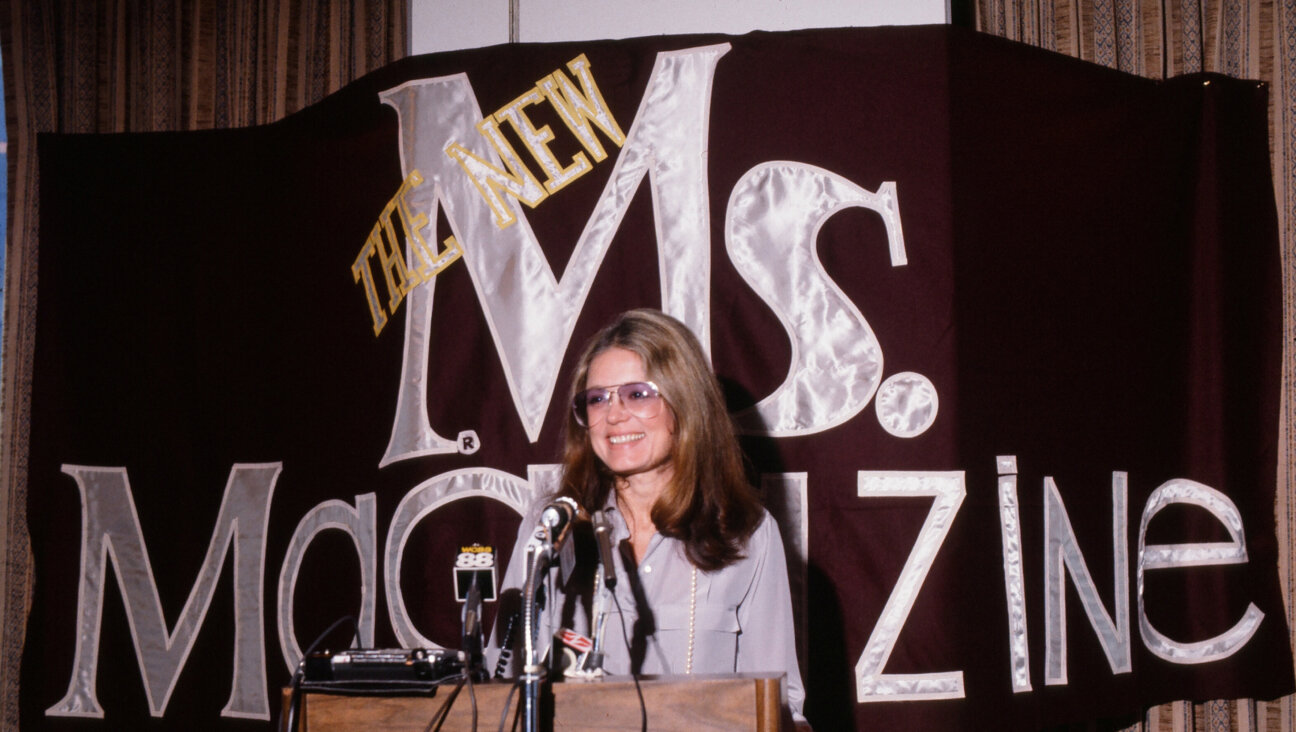How A Jewish Journalist Named Pulitzer Redefined Democracy

Graphic by Angelie Zaslavsky
For years, I have walked through the heavy doors of the stone building on Columbia University’s campus that houses the Graduate School of Journalism founded by Joseph Pulitzer — as a student, an alumna, an active volunteer.
For years, I have secretly wished that I’d be chosen to even be a finalist for one of the esteemed journalism prizes that bear his name.
For all those years, I was aware that Pulitzer was a Jewish immigrant to America, but that knowledge remained distant and unabsorbed, a gauzy figment of history without meaning or context.
After watching “Joseph Pulitzer: Voice of the People,” a fine documentary (opening March 1) about Pulitzer’s life and times, I have a new appreciation for the way his background shaped his groundbreaking journalism and his enormous contribution to American democracy. At a time when journalism is under attack from the highest quarters in the land, when journalists are detained and imprisoned with frightening impunity, when the economic model that fueled quality work is collapsing and when our cultural respect for the truth is fading as quickly as old newsprint, Pulitzer’s story is even more relevant than filmmaker Oren Rudavsky could have imagined when he began this project several years ago.
Rudavsky and his co-writer and producer Robert Seidman became enthralled with Pulitzer’s story before Donald Trump declared media to be the “enemy of the people.” Now they look prescient. In their film, Pulitzer is both emblematic of the power and pitfalls of independent journalism, and of the struggles immigrants face to become accepted in their new land.
Born to Jewish parents in Hungary in 1847, Pulitzer left home at 17 years old, and was eventually recruited to fight in a German-speaking unit of the Union Army. After the Civil War, he wound up in St. Louis, Missouri, where many German speakers settled, and taught himself English by reading Charles Dickens.
Brilliant and ambitious, with an almost religious belief in democracy, Pulitzer created the St. Louis Post-Dispatch from two disparate newspapers and turned it into a rabble- rousing force in a frontier town. Stories were short, smart and snappy — and controversial — such as when he published accounts of tax dodging by St. Louis’ leading citizens.
He married a wealthy Episcopalian and soon set his sights on a national audience. Moving to New York City, Pulitzer bought and transformed a local rag into The World, creating a new form of journalism that reflected the noisy entrance of the working class into the public space. “Nothing is worth printing that is not fit to be understood by the masses,” he said.
News became what was happening to ordinary people, not just the elite. The paper was feisty, entertaining, unapologetically appealing. Crime, divorce and society scandals were as worthy of coverage as whatever came out of Washington or City Hall.
Pulitzer also learned how to make news. When the city said it would charge pedestrians one penny to cross the newly opened Brooklyn Bridge, The World campaigned to drop the tax — and won. When the Statue of Liberty needed an expensive pedestal to remain firmly welcoming immigrants in New York Harbor, Pulitzer launched a fund raising drive and published the names of any reader who donated, no matter how small the amount. It was a good way to sell papers and a great way to position his enterprise on the side of ordinary folks — 120,000 of whom donated.
Lady Liberty became the symbol of The World, a stained glass figure displayed in the gold-domed towering building he eventually constructed to house his newspaper, at the time the most successful in America. (Columbia rescued the artwork before the wrecking ball destroyed the building, and it now adorns what’s known as the World Room at the Journalism School.)
As ambitious as Pulitzer was, it was inevitable that he would face competition, and the resulting newspaper war between him and William Randolph Hearst is the stuff of legend. Pulitzer introduced eye-catching visuals to The World, and his most well known cartoonist drew a recurring character of a strange little child dressed in yellow. In these madcap drawings ,“the yellow kid” functioned as sort of a silent Greek chorus — until Hearst wooed the kid away. The epithet “yellow journalism” derives from the tricks and sensational tactics both publishers engaged in to win readers, shape government action and rule the public conversation.
It was also inevitable that Pultizer’s Jewish heritage would surface in this brawling atmosphere, even if he did not identify with the Jewish people. In cartoons, he was mocked with a beak nose. Called Jew-seph Pulitzer or Jew-litzer.
“He both fit in and didn’t fit in,” Rudavsky told me. “As an immigrant, he felt freer in a way, perhaps. He had to make sense of this place.”
That willingness to challenge authority from the outside led Pulitzer to embark on his riskiest exposé — stories that alleged that President Theodore Roosevelt’s administration had engaged in corruption in the building of the Panama Canal, Roosevelt’s crowning achievement. The president prosecuted Pulitzer for “criminal libel,” calling the publisher “a creature of the gutter,” and other choice slurs that, sadly, are familiar to us today.
The case wound through the judicial system and eventually, Pulitzer’s right to free expression was affirmed by the United States Supreme Court.
“That an immigrant would feel up to attacking leaders — he was strikingly brave,” Rudavsky said. “He had a strong sense of morality, of right and wrong, and he was willing to critique mercilessly. Which is what drove Teddy Roosevelt crazy.”
Pulitzer had a bucket load of flaws and damaging idiosyncrasies, as befits any man who craves power as much as he did. He was ruthless and imperious. Blind in his later years, he was so sensitive to noise that he built soundproof rooms in his mansion and on his yacht. The populist, no-holds-barred journalism he championed left the elite at Columbia in a quandary about his gift to create a journalism school and the prizes, but the school opened in 1912, a year after his death, and the prizes were established five years later.
To drive home the relevance of Pulitzer’s story, Rudavsky intersperses his documentary with visuals of contemporary scenes, and uses live actors and famous voices in re-creations of Pulitzer’s life. So Liev Schreiber is Pulitzer with a Hungarian accent; Tim Blake Nelson an over-the-top Roosevelt; Adam Driver, the narrator, and so on. It’s a hokey technique, but it works.
In the end, it is the impact of Pulitzer’s career that makes his story so compelling and instructive. Even though Pulitzer tried desperately to assimilate into the American elite, his innate outsider-ness — as a Jew, as an immigrant — enabled him to identify with the masses in a way no newspaper publisher had before, or since. And his willingness to challenge established power on behalf of the people set the stage for the surge of serious investigative work ennobling journalism today.
Pulitzer took seriously the imperative of journalism to uphold democracy. “A journalist,” he said, “is a lookout on the bridge of the ship of state. He is there to watch over the safety and the welfare of the people who trust him.”
Jane Eisner is the Forward’s writer-at-large and the Koeppel Fellow in Journalism at Wesleyan University.
























